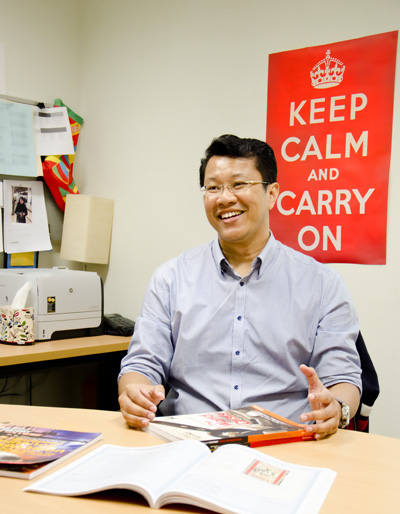Why Singapore’s English Teachers Should Embrace Singlish, Not Fight It
Is it time for Singaporean educators to embrace Singlish as a legitimate learning tool? What the Research […]
Read More
There are always two sides to every story. But what happens when there are different, even conflicting, accounts of the same historical event? How do we make sense of them? And how do we decide which account is the “better” one?
Why did the Soviet Union collapse? Why did the US drop the atomic bomb over Hiroshima? Why was Hitler so popular in Germany? These are some questions often raised in History classrooms.
While the “standard” practice is to look in the textbook for the definitive answer, Dr Suhaimi Afandi tells us that in an inquiry-based classroom, the search for an answer goes beyond relying on just one source of information.
 For his research, Suhaimi studied students’ ideas about history and how they viewed different accounts of the same historical event. He also focused on how teachers think about these ideas and the extent to which they are willing explore them further.
For his research, Suhaimi studied students’ ideas about history and how they viewed different accounts of the same historical event. He also focused on how teachers think about these ideas and the extent to which they are willing explore them further.
History has traditionally been taught as a litany of events and names chronicled in school textbooks. Students would memorize them as facts and then “return” them in the form of essays.
But now, with inquiry as a recommended pedagogy in the History classroom, things are about to get more challenging. It is no longer, as Suhaimi succinctly puts it, “open the textbook, learn the story, memorize and go for exams”.
This is because inquiry requires that teachers and students problematize the learning of history as a means to better understand past events.
“With inquiry, and then of course with this focus on conceptual aspects of history, students are given an opportunity to grapple with this very complex idea about history as reconstructions of events that happened in the past,” Suhaimi explains.
Students will need to understand the nature of historical knowledge, and that historians reconstruct stories about the past in different ways because they may want to address different questions or attach different significance to the same event.
In the inquiry-based classroom, the History textbook becomes just another account amongst other accounts of history.
The inquiry approach encourages teachers and students alike to do history as historians would, and encourages them to construct their own interpretations and narratives.
“Students have to go out and investigate,” he adds. “In an inquiry-based lesson structure, they have about four to five lessons to investigate a particular historical problem or question. This involves students gathering and analysing the data, coming up with possible solutions to the problem and then formulating their conclusions.”
Sentosa’s Fort Siloso and Labrador Park, for example, have become popular destinations for History field trips which student teachers embark on to answer inquiry questions related to the fall of Singapore in 1942. One such question is: Why did Singapore fall to the Japanese army during World War II despite its strong military fortifications?
Being on site to observe and gather information on a particular event is a more authentic learning experience for these students. They are usually busy collecting evidence to substantiate their claims and to ensure reliability and accuracy in the historical accounts that they construct.
– Suhaimi Afandi, Humanities and Social Studies Education Academic Group
When asked what they thought of the inquiry-based lessons, students in a pilot school compared them to the more “traditional” ones and “almost unanimously” agreed that lessons that were inquiry-driven were more interesting and engaging.
Teachers whom Suhaimi spoke to were surprised when they listened to the historical interpretations students came up as they presented their findings. “When you work with students and listen to them, you see that many of them are working with all sorts of sophisticated ideas,” he says.
To Suhaimi, using inquiry as a strategy in the classroom opens up windows of opportunity for both learners and their teachers. Research has shown that students work with prior ideas about history that can range from something simple to something highly sophisticated.
“If teachers conceive history as a story that is merely transmitted to students, these students will end up with limited ideas,” Suhaimi explains. “With inquiry, it enables teachers to come up with strategies to get students to think about history – that it is interpretative, and that accounts of past events are reconstructed by historians based on available evidence.”
 He also notes that History lessons are now more interesting and livelier with inquiry as a form of pedagogy.
He also notes that History lessons are now more interesting and livelier with inquiry as a form of pedagogy.
Students also learn from one another when they present to their classmates their perspectives on differing historical accounts of the same event.
It goes to show that in the History classroom, nobody is really an authority on what’s right or wrong – what counts is evidence.